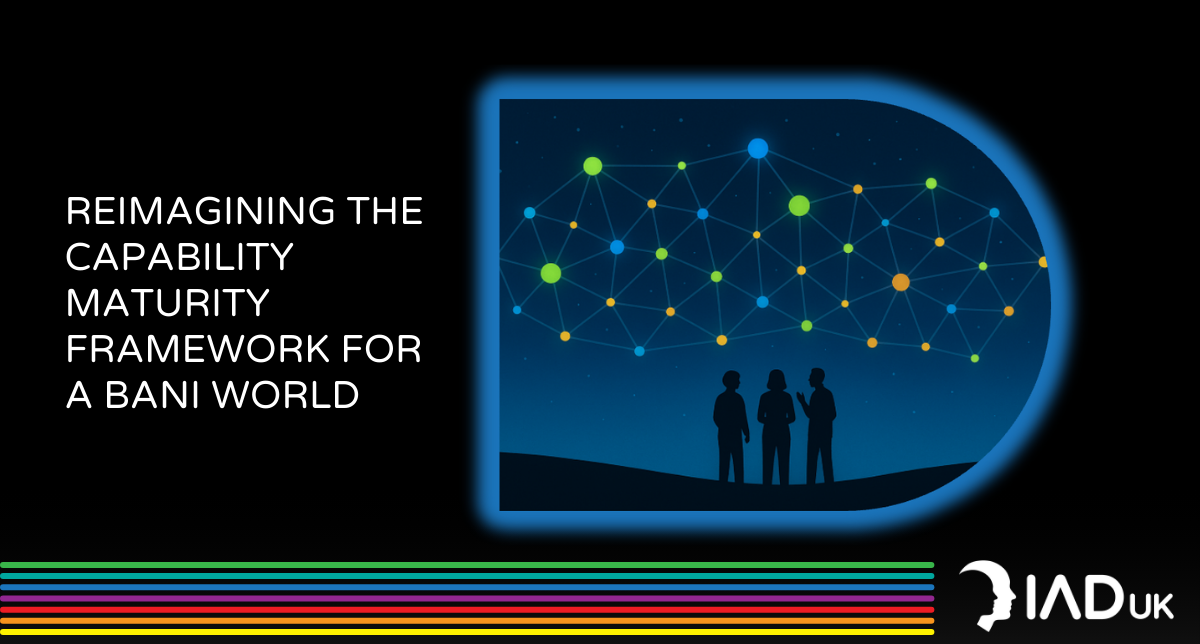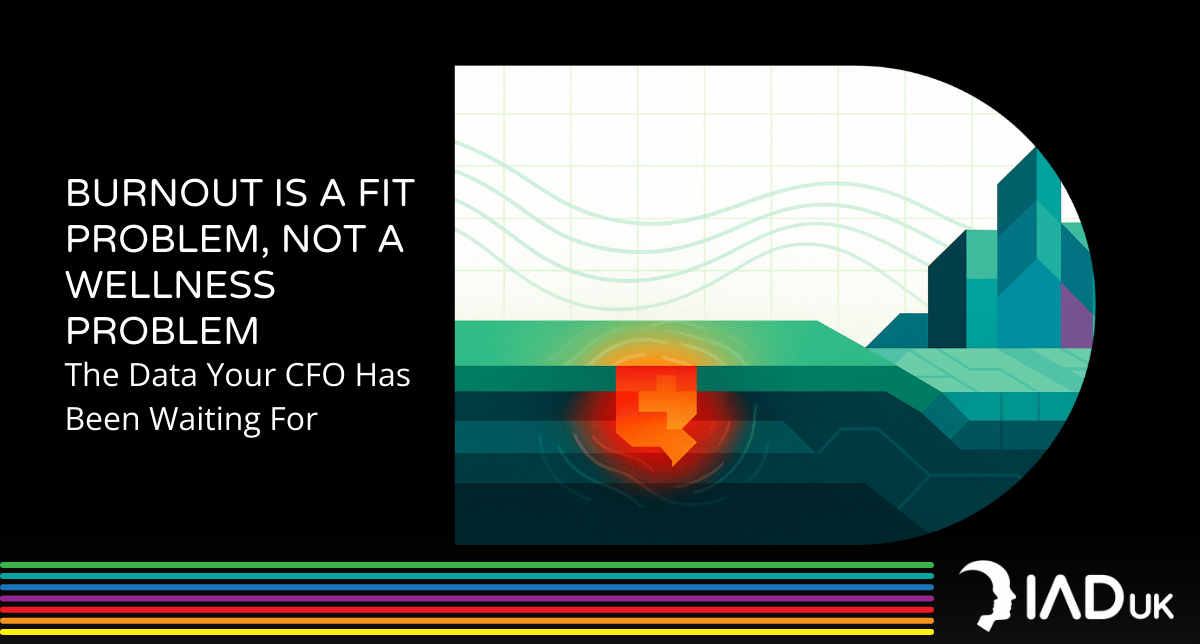Culture-as-infrastructure: scaling without the strain
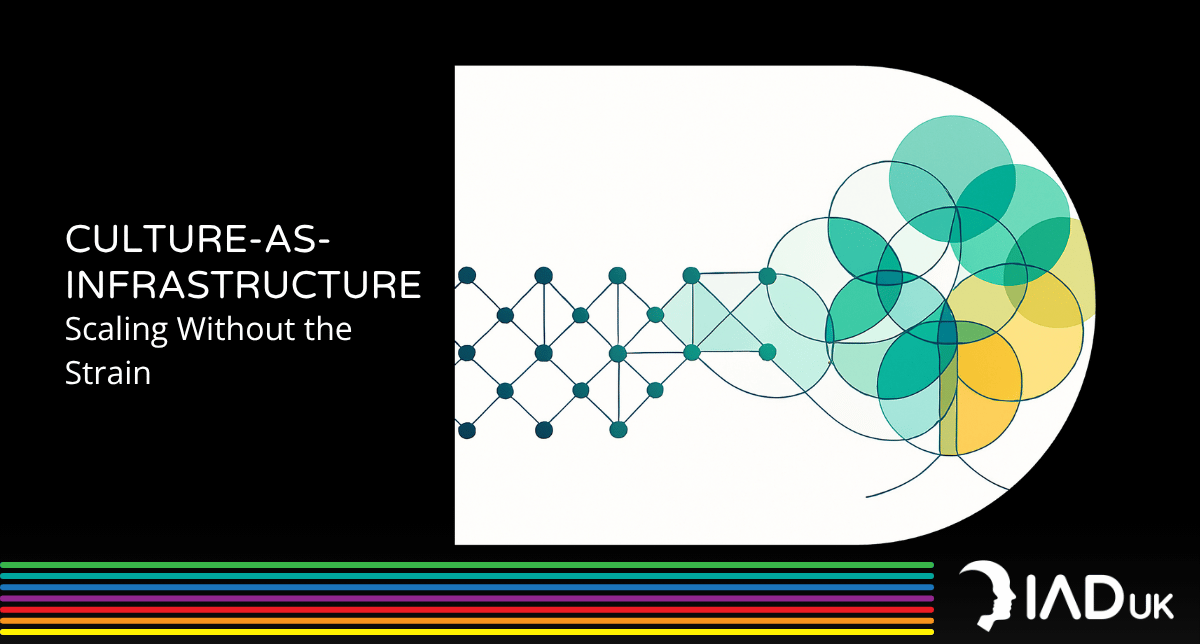
Why Mid-Market Organisations Must Hardwire Developmental Systems to Grow
Every Head of Organisational Development knows the ambition. You want to help your organisation grow from a tight-knit team of 50 to a thriving business of 500 without losing what made it special. You want a culture that scales with the business, not one that buckles under the weight of growth.
But the reality is often less hopeful. As the organisation expands, so does the strain. Informal norms break down. Decision-making slows. Communication stretches thin. Leaders start firefighting. And the once-coherent culture begins to fragment into pockets of frustration, misalignment, and drift.
The problem isn't that the organisation has grown. It's that the culture hasn't been designed to grow with it.
This article introduces a different approach: treating culture as infrastructure. Not as behaviour to manage or spirit to maintain, but as a system to wire. A system that enables growth, absorbs complexity, and sustains coherence at scale.

The mid-market reality
According to the
Node4 Mid-Market Report 2025, UK scale-ups are haemorrhaging productivity due to cultural and operational misalignment. As businesses grow, their internal systems struggle to keep up. The result: stalled transformation efforts, inconsistent execution, and rising employee frustration.

The cost is measurable. Growth plans falter not because of weak strategy, but because the organisation cannot absorb the complexity that comes with scale. Teams misfire, decision loops widen, and change fatigue sets in before outcomes are delivered.
Deloitte’s Human Capital Trends report adds a crucial insight. Organisations that outperform their peers are not simply more agile or better led. They have designed systems that support continuous human performance. Development is not a side benefit of good leadership. It is the product of a well-engineered environment.
What these findings reveal is simple: the failure to scale culture is not a soft issue. It is a structural one. And structure is something you can design.
Coaching culture is not enough
Many mid-market organisations try to meet the challenge of growth by promoting a coaching culture. The logic is clear: better conversations, more support, deeper trust. But coaching culture is often asked to do more than it can structurally deliver.
Most coaching cultures rely on individual initiative. They flourish when leaders are skilled, values are aligned, and pressure is manageable. But under stress, or with turnover, the system falters. Coaching becomes sporadic. Reflection gives way to reaction. Support stretches thin.
The problem isn't the intention. It's the delivery model. Coaching cultures depend on willing people. Infrastructure depends on repeatable systems.
If you're serious about scaling development, the solution isn't more coaching. It's a system that makes developmental work unavoidable. The
Culture-as-Infrastructure Blueprint outlines exactly how that shift happens, without asking more from your leaders than the system is designed to support.
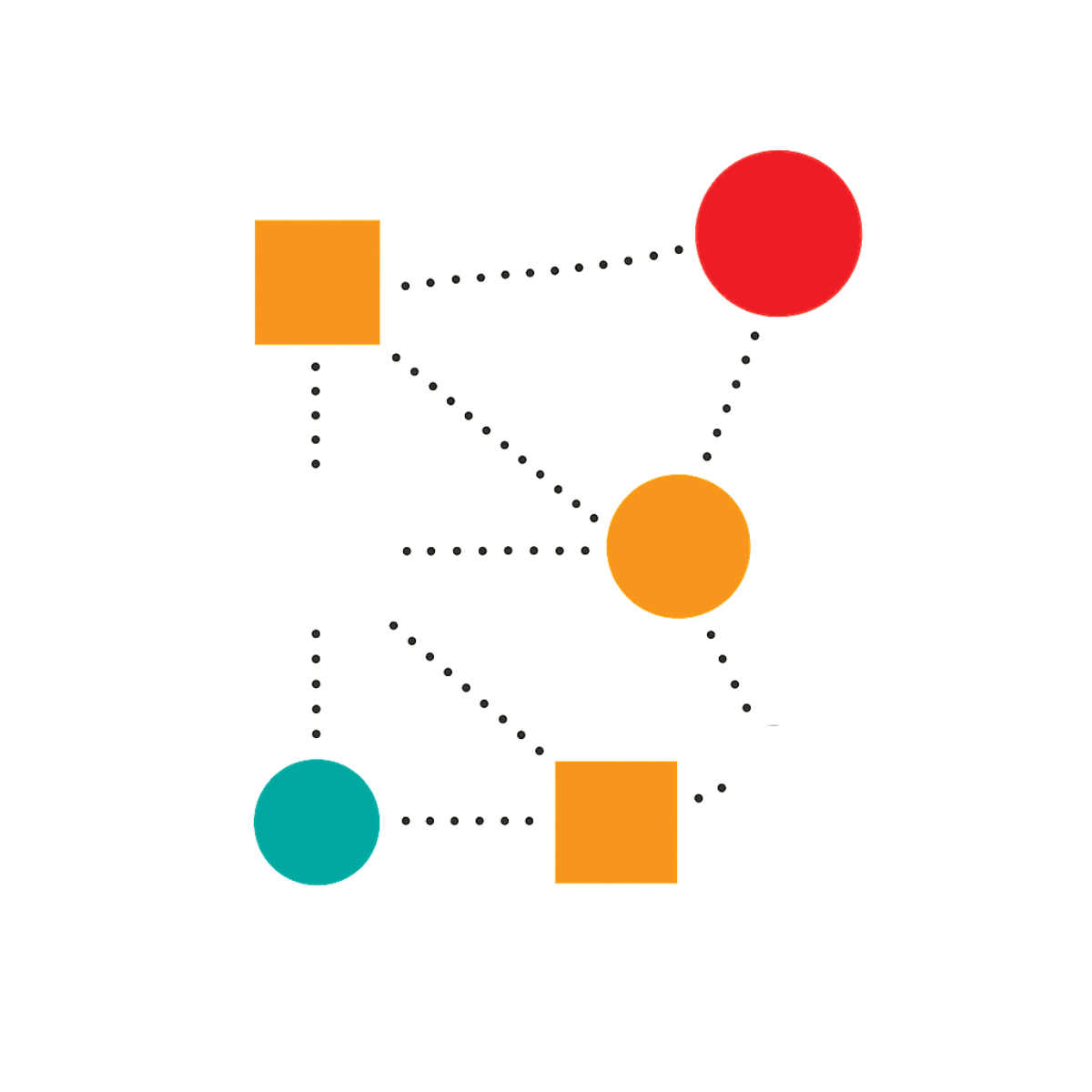
Understanding burnout as a fit problem changes the solution set. Instead of prescribing resilience workshops or meditation apps, leaders must learn to diagnose and address the structural causes of cognitive overload. This requires a shift in mindset from managing energy to managing complexity. When the developmental demands of a role exceed a person’s current capacity, the result is not only burnout; it is predictable underperformance.
To build truly sustainable organisations, we must stop asking, “Why are people burning out?” and start asking, “Where is the misfit between thinking and task?” Only then can we design systems that support human sustainability from the inside out.
Beyond mindsets
The language of fixed and growth mindsets is everywhere in leadership discourse. But for adult development, it’s a poor lens. As
Dr Darren Stevens points out, mindset thinking was developed for children in educational settings. It simplifies growth into a binary, when in reality, adults shift by reconstructing how they interpret and respond to complexity.

What culture needs to support is not a more positive mindset, but a more complex mode of thinking. This is where Dynamic Intelligence becomes essential. It refers to the ability to notice one’s own constructions, adapt them to changing contexts, and choose more effective responses. It is not an attitude. It is a capability that can be developed.
If your culture only encourages confidence and resilience, it may produce short-term engagement. But if it builds the capacity to reflect, reframe, and reorient under pressure, it becomes a long-term advantage.
This shift, from mindset to complexity, is what makes a culture developmentally scalable.
What culture-as-infrastructure actually means
Culture-as-Infrastructure is not a metaphor. It is a practical shift from personality-driven leadership to system-level design. Instead of relying on values alignment or individual charisma, this approach embeds developmental capability into how the organisation operates.
At the core are three system components:
Reflection Rituals
Deliberate pauses built into operational flow that allow teams to surface assumptions, examine decision patterns, and recalibrate thinking in real time.
AQ Dashboards
Tools that track Awareness Quotient across individuals and teams, giving visibility into how well the organisation is thinking, not just how hard it’s working.
MCO Coaching (aka Next Level Coaching)
Structured relationships where more cognitively complex leaders support others in expanding their awareness, challenge readiness, and reflective capacity.

These aren’t programmes. They’re parts of the system. When built into leadership rhythms, team structures, and review processes, they make developmental growth repeatable, visible, and scalable.
The Culture-as-Infrastructure Blueprint provides a step-by-step guide for designing and deploying this system.
Why infrastructure beats initiative
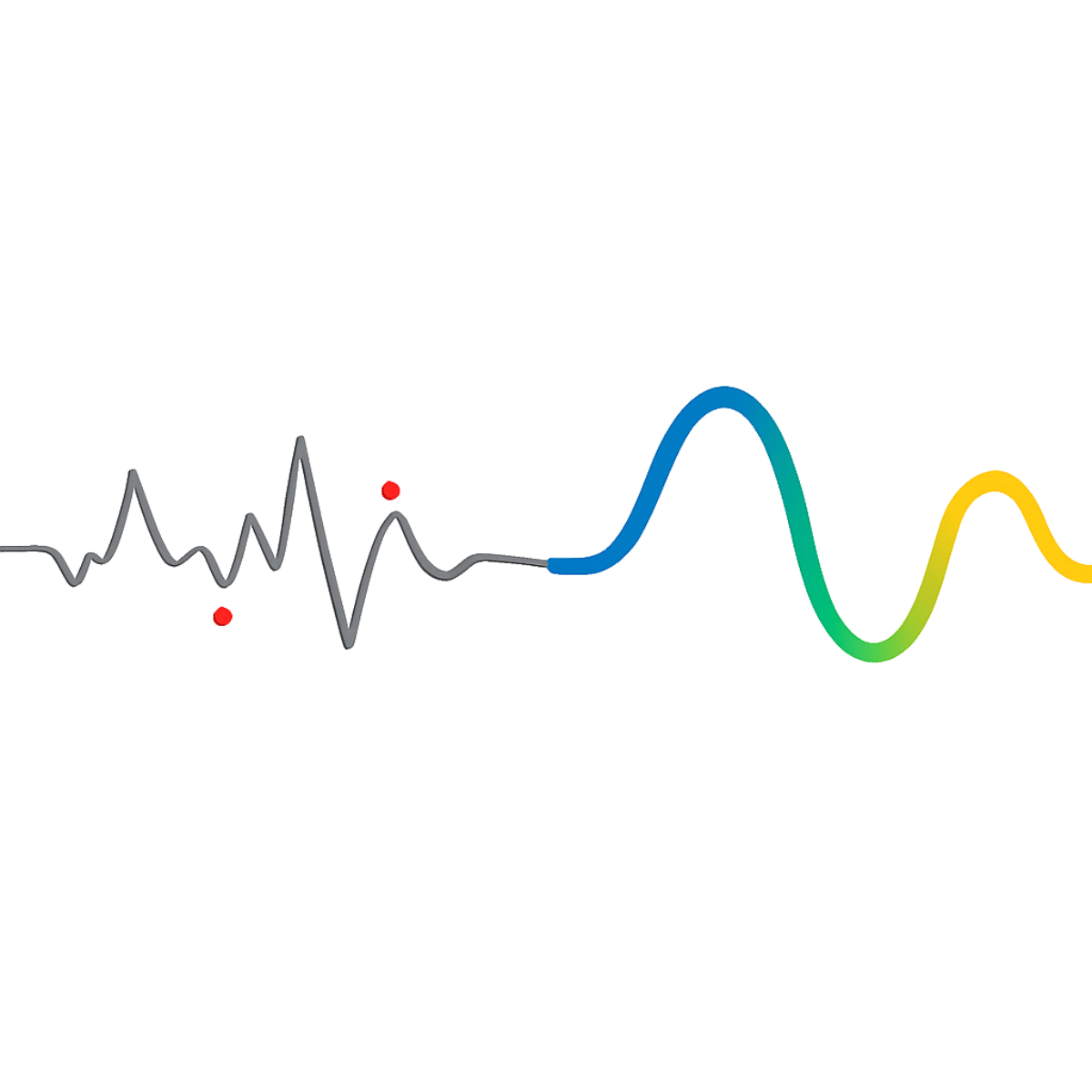
Initiatives come and go. Infrastructure stays. That’s what makes it powerful.
When development is tied to workshops, training programmes, or leadership styles, it becomes conditional. If the champion leaves, or priorities shift, so does the commitment.
But when development is embedded into how the organisation thinks, plans, and responds, it becomes a permanent feature of the operating system.This is especially critical in scale-ups. As complexity increases, the cost of misalignment multiplies. You don’t just need clearer strategy or better communication. You need a culture that adjusts itself, because it knows how.
With embedded reflection, visibility into thinking quality, and structured cognitive stretch, your organisation becomes more adaptive with every cycle. This is not just resilience. It is compounding developmental return.
Infrastructure outlasts initiatives. It also outperforms them.
Stop managing culture, start wiring it
If your current approach to culture depends on motivation, alignment, or role modelling, it will struggle to scale. What works for 50 people will not hold at 150. By 500, the cracks become fault lines.
The alternative is to wire culture into the organisation’s architecture. To make development a system feature, not a leadership trait.
The Culture-as-Infrastructure Blueprint offers a practical path forward. It outlines the key components, principles, and phases for building a developmental infrastructure that grows with your organisation. It is not a toolkit. It is a wiring diagram.
If you're ready to move beyond coaching conversations and culture programmes, this is where to start.

Culture that grows with you

Every organisation is scaling something. Revenue. Headcount. Complexity. The question is whether your culture is keeping pace, or quietly dragging behind.
Culture-as-Infrastructure is not about doing more. It’s about designing better. When reflection is routine, awareness is measured, and cognitive stretch is built into the system, culture becomes self-scaling. It evolves with the business because it was constructed to.
So the real question isn’t whether you value development. It’s whether you’ve built the infrastructure to support it.
Are you still treating culture as a feeling to protect, or are you ready to wire it for growth?
Book a complementary call with us to discuss how we can help your organisation to implement culture-as-infrastructure
Alternatively, why not download your complementary copy of our new book:
An Introduction to the Dynamic Intelligence Development System™

